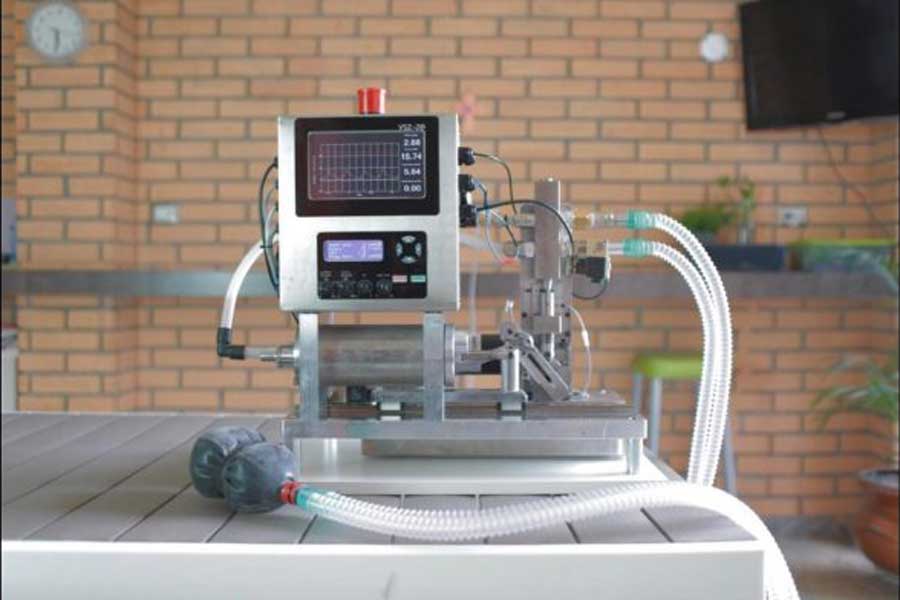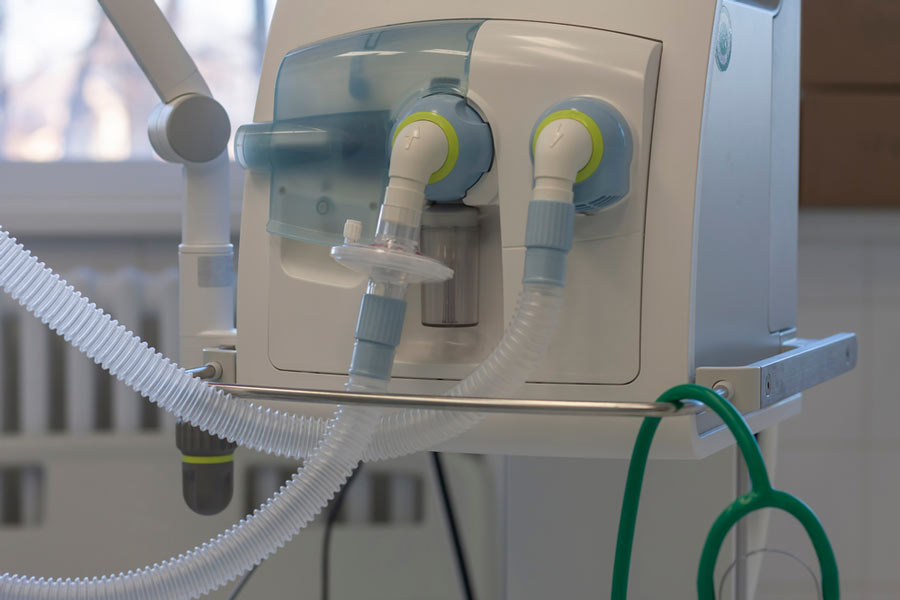Tec de Monterrey, the Salvador Zubirán National Institute of Nutrition and companies Femsa, Metalsa, Torey, and Bocar have managed to develop the first ventilator entirely manufactured in Mexico, the VSZ-20, in record time and cost.
The VSZ-20 costs 10,000 dollars (approximately 225,650 pesos), while the commercial value of one of these in the midst of the health crisis runs to 1.4 million pesos. Development took from 6 to 8 weeks.
Guillermo Domínguez Cherit, Deputy Director of the National Institute of Nutrition and Dean of the School of Medicine and Health Sciences of Tec de Monterrey in the Mexico City region, explained that this was due to the urgent need for ventilators.
“We decided to take a look at what we had. We’d used these ventilators in the past and saw that the piston provided movement that was effective and quick to develop for in the emergency, in terms of both health and cost.
“We had to see how we could develop something quicker with the components we had on the domestic market. It took us from 6 to 8 weeks to do the reverse engineering in order to disassemble what we had and make a new ventilator,” he said.

Coordinated by the Ministry of Foreign Affairs (Secretaría de Relaciones Exteriores, SRE), the teams contacted each other and carried out the reverse engineering process over a period of 5 weeks to develop a new ventilator.
Salvador Almaguer, Director of Operations at Femsa, explained that they were able to bring down the cost of the apparatus by not requiring imported material, as it was mechanical and its development process was based on the use of Mexican components and designs.
This initiative has the capacity to manufacture 600 devices per week.
Almaguer clarified that the team has committed to making 100 ventilators available in the first week of June and then scaling up production.
“What we’re doing is sending them to different hospitals so that pulmonologists, nurses, and doctors can familiarize themselves with the equipment and train on it,” he confirmed.
Almaguer said that once it had received the green light from the Federal Commission for the Protection Against Sanitary Risk (Comisión Federal para la Protección contra Riesgos Sanitarios, COFEPRIS), the ventilator was presented to the Mexican Social Security Institute (Instituto Mexicano del Seguro Social, IMSS) for review, so they will be ready to start implementing the devices soon.
Those involved said that the most important challenge they faced was the lack of components in the sector. Now, the challenge is dealing with the markup on these.
THE COST OF VENTILATORS
There’s been an increase of 342% in the cost of ventilators over the past three years.
According to data from the government procurement platform CompraNet, the cost of a ventilator for the health market in 2017 was 269,985 pesos.
The ventilators acquired most recently by the Mexican government for treatment during the pandemic cost 1.25 million pesos each and were purchased from China, according to a statement by Marcelo Ebrard, Minister for Foreign Affairs.
If you compare the cost of the new Mexican ventilator against that on the market, it costs 16.42% less than the price in 2017.

THINKING CREATIVELY WITH WHAT YOU HAVE
With a view to the following weeks and months, those responsible for the project explained that they will add improvements in each production run.
They explained that they want to have a constant supply, using adaptive manufacturing, and may even replace or adapt processes depending on what’s available if they don’t have a certain component in future.
“We’re already drawing up contingency plans in case we run out of a certain component. (...) Model 2 is already being tested and we hope that it will come into production in 2 weeks. We expect that this will enable us to rectify problems in the supply chain, and it will be more automated,” said Almaguer.
He observed that a possible shortage of Model 1 could be due to the motor, a piece that comes from Italy. Due to the high volume that Mexico is requesting, this small manufacturer might not be able to supply enough.
However, they have considered replacing this motor with a lower capacity one that could be compensated for by a higher capacity transmission.
“So, if something fails, we can compensate perfectly well,” said Almaguer.
The patent belongs to the National Institute of Nutrition, and Domínguez Cherit added that they will keep making improvements to the equipment in order to upgrade it in future, with a team of specialists consisting of approximately 35 people involved from the institute.
CONGRESS OF THE UNION RECOGNIZES EFFORT
The Permanent Commission of the Congress of the Union has recognized the institutions involved in creating the first artificial ventilator made entirely in Mexico, in the midst of the COVID-19 pandemic that’s gripping the country.
The legislators praised the joint effort made by the Salvador Zubirán, National Institute of Medical Sciences and Nutrition, the SRE, Femsa, Metalsa, and TecSalud, the health system of Tecnológico de Monterrey.
“This ventilator will be of great use in saving many Mexican lives,” they announced.
YOU’LL SURELY WANT TO READ THIS TOO:





